Intro
Discover the 7 hydralazine side effects, including hypotension, tachycardia, and lupus-like symptoms, to manage hypertension and understand potential risks, interactions, and contraindications.
Hydralazine is a medication that is commonly used to treat high blood pressure and heart failure. It belongs to a class of medications known as vasodilators, which work by relaxing and widening blood vessels to improve blood flow and reduce blood pressure. While hydralazine can be an effective treatment for these conditions, it can also cause a range of side effects. In this article, we will explore 7 common hydralazine side effects, their symptoms, and what you can do to manage them.
Hydralazine has been used for many years to treat high blood pressure and heart failure. It is often prescribed in combination with other medications, such as diuretics and beta blockers, to achieve optimal blood pressure control. However, like all medications, hydralazine can cause side effects, some of which can be serious. It is essential to be aware of these potential side effects and to discuss any concerns you may have with your doctor.
High blood pressure and heart failure are significant health concerns that can have a substantial impact on a person's quality of life. If left untreated, these conditions can lead to serious complications, such as heart attack, stroke, and kidney disease. Hydralazine can help to reduce the risk of these complications by lowering blood pressure and improving blood flow to the heart and other organs. However, it is crucial to be aware of the potential side effects of hydralazine and to take steps to manage them.
Introduction to Hydralazine Side Effects
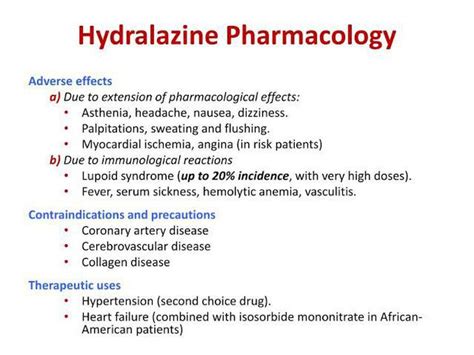
Common Hydralazine Side Effects
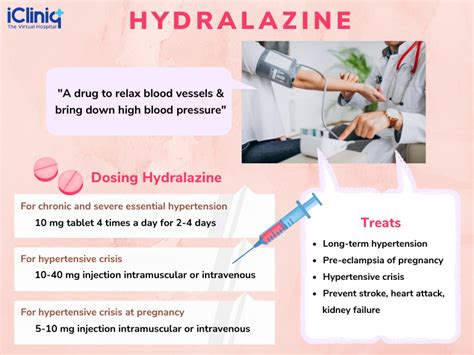
These side effects are usually mild and may resolve on their own within a few days of starting treatment. However, if you experience any severe or persistent side effects, you should seek medical attention.
Severe Hydralazine Side Effects
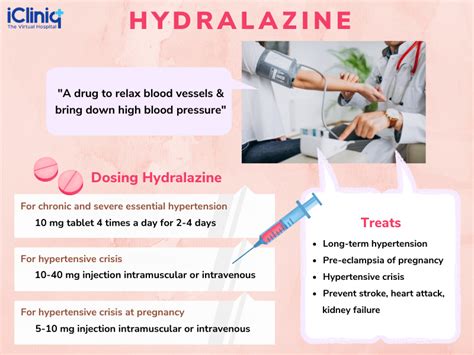
These side effects are rare but can be serious. If you experience any symptoms that concern you, you should seek medical attention immediately.
Managing Hydralazine Side Effects
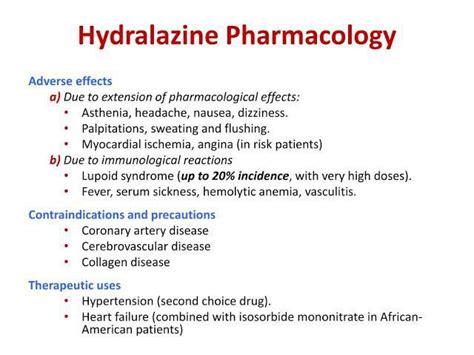
It is also essential to discuss any concerns you may have with your doctor. They can help you to manage your side effects and adjust your treatment plan as needed.
Hydralazine and Pregnancy
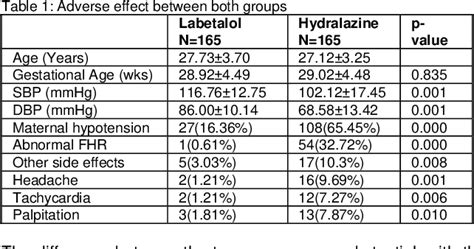
Hydralazine and Breastfeeding
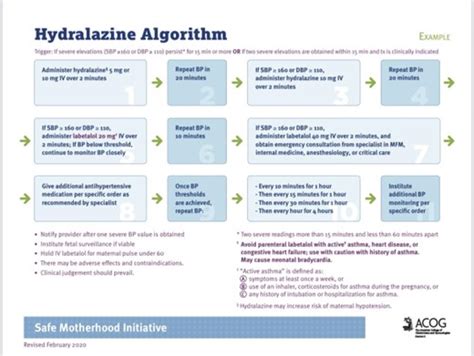
Hydralazine Interactions
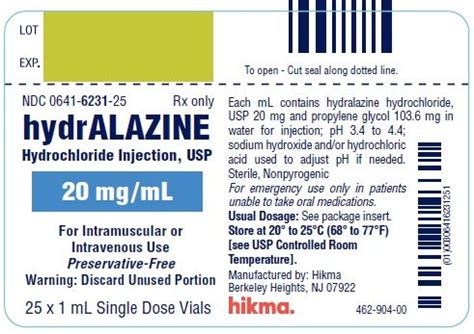
These interactions can increase the risk of side effects and reduce the effectiveness of treatment. It is essential to discuss any medications you are taking with your doctor and to monitor your blood pressure and side effects closely.
Conclusion and Next Steps

If you have any questions or concerns about hydralazine side effects, please do not hesitate to comment below. We would be happy to hear from you and provide any additional information or support you may need. You can also share this article with others who may be interested in learning more about hydralazine side effects.
What are the most common hydralazine side effects?
+The most common hydralazine side effects include headache, dizziness, lightheadedness, fatigue, nausea and vomiting, diarrhea, and joint pain and swelling.
Can hydralazine cause severe side effects?
+Yes, hydralazine can cause severe side effects, including lupus-like syndrome, rheumatoid arthritis, kidney damage, liver damage, and anemia.
How can I manage hydralazine side effects?
+You can manage hydralazine side effects by taking your medication as directed, monitoring your blood pressure, maintaining a healthy diet and lifestyle, staying hydrated, and getting regular exercise.
